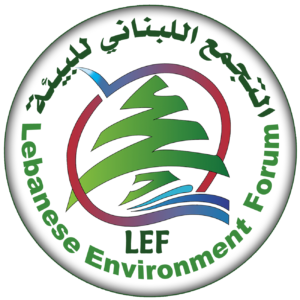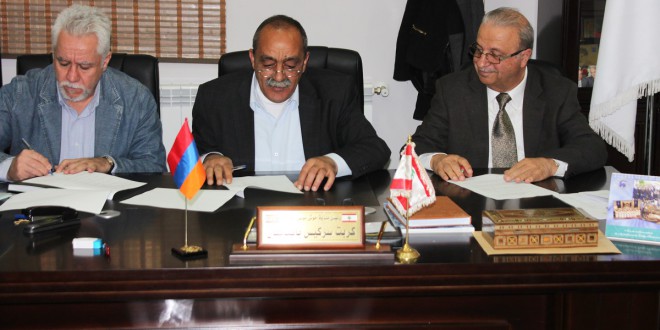Lebanese Environment Forum (LEF) and the Society for the protection of nature in Lebanon (SPNL) signed a partnership agreement with the municipality of Anjar to promote sustainable hunting practices in Lebanon through initiating a pilot model public hunting area – PHA announced by the municipality planned to be far from houses and the important bird areas IBA.
The event was held in Anjar municipality with the presence of LEF president Rifaat Saba, SPNL director general Assad Serhal, and the president of Anjar municipality Garabet Pamboukian.
SPNL is currently working on the identification of 10 PHAs on municipal land distributed in the different Lebanese regions.
LEF has received a CEPF large grant of over $180,000 to promote sustainable hunting practices in Lebanon, using a community-based approach. The project will complement other work by the BirdLife International/UNDP-GEF Migratory Soaring Birds project, and by the Society for the Protection of Nature in Lebanon (SPNL), the BirdLife national partner through:
Selection of one of the identified PHAs
Survey the PHA site for its habitats, land uses, general biodiversity, and threats
Implement an EIA assessing the impact of establishing PHA on the site
Develop a management plan including all the needed actions and activities for promoting sustainable hunting in the area.
LEF & SPNL will advocate for the community management of the PHA by municipalities-local authorities. Management procedures would be included in the site management plan. To support the national adoption of PHA concept for proper implementation of the hunting law, a field visit would be organized for relevant ministries, decision makers, hunter organizations, conservation NGOs, media, to the model PHA in Anjar.
The project aims to develop a good model for cooperation between conservation NGOs in Lebanon towards a common goal, and the management of possible PHAs in all Lebanese territory through collaborative efforts.
Establishment of Lebanese PHAs is an attempt to balance the needs of wildlife with the needs of people using the best available science where the area should be of certain size to ensure hunting security and possibility of hunting for almost everyone within the carrying capacity limitation and the presence of the most searched game species on the site. PHAs allow game hunting with bag limit under the control of the local community that is represented by the local authority, the municipality. Management within PHAs draws on disciplines such as mathematics, chemistry, biology, ecology, climatology and geography to gain the best results. PHAs contribute to reduce the loss in the earth’s biodiversity by taking into consideration ecological principles such as carrying capacity, disturbance and succession; and environmental conditions such as physical geography, pedology and hydrology with the aim of balancing the needs of wildlife with the needs of people. PHAs management may require reforestation, pest control, nitrification, denitrification, irrigation, coppicing and hedge laying. Aldo Leopold, one of the pioneers of wildlife management as a science, defined the PHAs as “the art of making land produce sustained annual crops of wild game for recreational use”.


